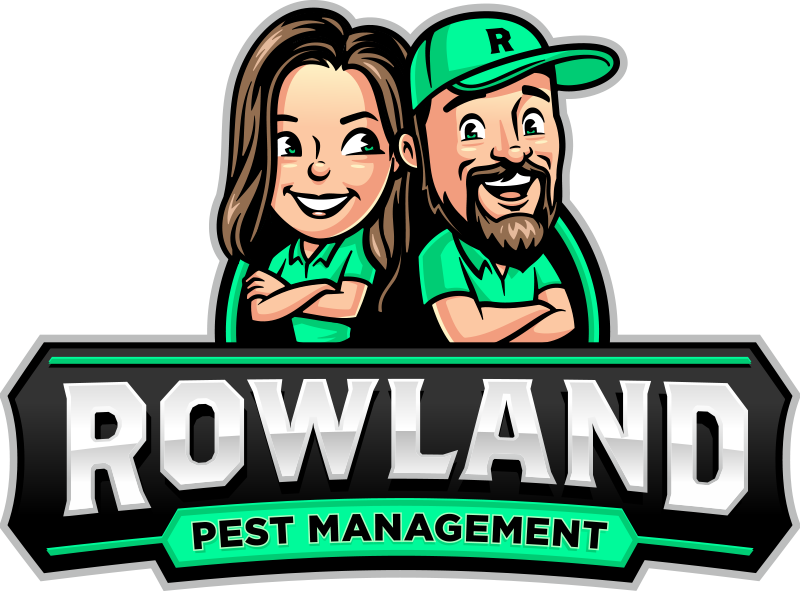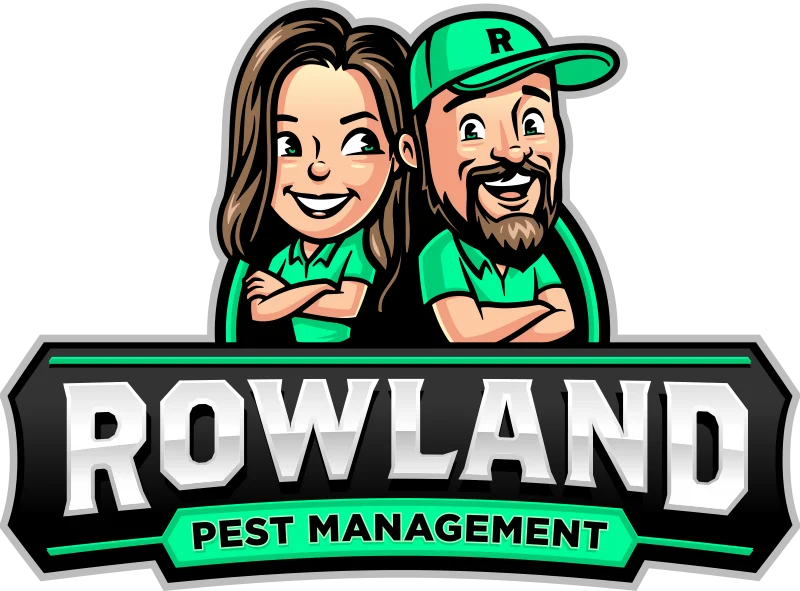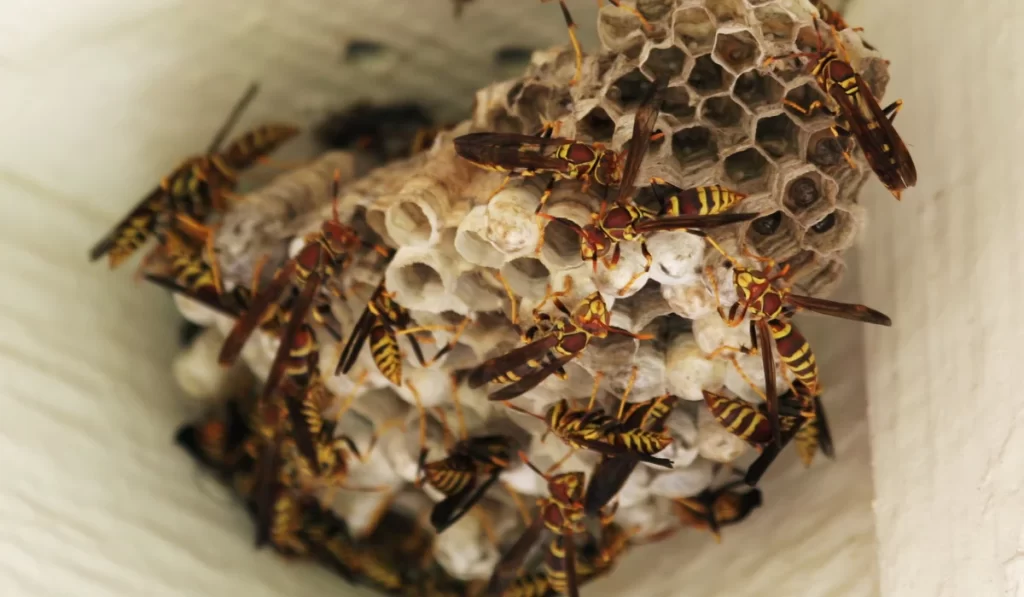Noticing an uptick in wasp activity around your home?
If you’re in Central Florida, it’s no surprise. Wasp season hits hard here, especially in late summer when many species of wasps are at their peak. These stinging insects are constantly on the lookout for the best spots to build nests and raise their larvae.
The trouble is, your home might be checking all their boxes.
Let’s break down what exactly attracts wasps and what you can do to prevent a full-blown wasp infestation, plus what steps to take if they’ve already moved in.
Key Takeaways
- Sweet food, drinks, and trash smells can attract yellow jackets and other wasps to your yard or porch.
- Fruit trees, blooming plants, and standing water give wasps the food and water they need to stick around.
- Eaves, wall gaps, and furniture provide places for wasps to build nests if entry points are not sealed.
- Ongoing wasp problems may need wasp traps, natural sprays, and a pest control company to fully solve them.
Sweet Smells and Sugary Substances
Wasps, particularly yellow jackets, are drawn to sugary substances. That includes fruit juice, sweet drinks, and even leftover soda cans tossed in your garbage cans. Those lingering sweet smells around outdoor dining areas or trash bins can attract those looking for easy food sources.
Rinse recyclables and keep outdoor bins sealed tightly to keep these pests away.
Flowering Plants and Fruit Trees
While honey bees and bumblebees get most of the credit as pollinators, wasps also play a role. Unfortunately, this means your flower beds and fruit trees may be part of what’s luring them in. Fallen fruit and blooms loaded with nectar serve as strong attractants.
To reduce the appeal, harvest ripe fruit promptly and remove anything that drops to the ground.
Standing Water and Overhangs
Wasps need water to stay hydrated, especially in the Florida heat. Standing water in clogged gutters, plant saucers, or bird baths offers them a reliable drink.
What makes things worse is when these are paired with nearby overhangs, eaves, or other shady structures where wasps can build nests undisturbed.
Regularly check for and eliminate these water sources.
Aphids and Caterpillars
Certain species of wasps feed on insects like aphids and caterpillars to feed their developing larvae. If you’re seeing a lot of tiny bugs on your shrubs or trees, that might be part of the problem.
Treating these pest problems early with eco-friendly methods can help you reduce the appeal to predator wasps.
Open Food and Sweet Drinks
Outdoor grilling and al fresco meals are staples in Florida life, but leaving food uncovered is like sending an invitation to wasps. Meat and protein-rich leftovers are especially appealing to yellow jackets.
Cover food, clean up promptly, and don’t leave plates or drink containers out longer than needed.
Entry Points and Nesting Sites
Once wasps scout your property, they’re looking for ideal nesting sites.
These often include eaves, wall voids, attics, and even grills or outdoor furniture. Small entry points like cracks or holes near the roofline or foundation are perfect access paths.
Sealing these up is one of the most effective ways to prevent new nests from forming.
What to Do if Wasps Won’t Leave
Even after you’ve tackled all the attractants, wasps might still stick around. Here’s how to get rid of wasps if they’ve already settled in.
Locate and Monitor Wasp Nests
Inspect the property for visible and hidden nests. Paper wasps tend to favor open areas under eaves or porch ceilings. Yellow jackets may tunnel underground or behind siding. Hornets often build enclosed aerial nests in trees or shrubs.
Different nesting behavior depends on the type of wasp you’re dealing with.
Use Wasp Traps Effectively
Wasp traps can help manage wasp activity, but must be used strategically. Place them near areas of known wasp traffic—away from patios or entrances. These can reduce numbers, but are rarely enough for larger infestations.
Use a mix of protein and sweet-based baits depending on the time of year.
Try DIY Deterrents and Essential Oils
For a natural approach, consider making a spray bottle solution using peppermint oil and dish soap mixed with water. Apply this to eaves, overhangs, and other high-traffic areas to help repel wasps.
Other essential oils, like clove or lemongrass, can also be effective in small areas, though results vary.
Be Careful with Dead Wasps and Old Nests
Dead wasps can still signal danger.
If you see several in one area, that could mean a nest is nearby. Removing old or abandoned nests should always be done cautiously, especially since new nests are often built near old ones if scent trails remain.
Always use gloves and thoroughly clean the area with soapy water to remove pheromones.
Contact a Pest Control Company
DIY tactics don’t usually cut it, so it’s best to bring in professional exterminators.
At Rowland Pest Management, we offer comprehensive wasp control services tailored to Central Florida homes. Our team identifies the type of wasp and treats the problem safely, even nests high up near your roofline.
Whether you’re dealing with persistent paper wasps on your porch or yellow jackets burrowing near your AC unit, our local team knows exactly how to handle Florida’s toughest wasp problems. Give us a call to take care of it safely.
Frequently Asked Questions
If you’re dealing with wasps around your home, you might still have a few questions. Here are some common ones we hear that can help you stay ahead of the problem:
What time of day are wasps most active around homes?
Wasps are busiest from late morning to mid-afternoon when temperatures are warmer. Plan yard work or outdoor meals early in the morning or near dusk to lower the chances of encountering active wasps.
Can outdoor lighting attract wasps at night?
Most wasps are inactive after dark, but bright lights can disorient some species and attract flying insects that wasps feed on. Use softer, yellow-toned bulbs to make your outdoor lighting less inviting.
Are there specific plants that naturally repel wasps?
Yes, plants like mint, basil, citronella, and lemongrass have strong scents that can help repel wasps. Plant them near patios, entryways, or decks to discourage wasps from hanging around those areas.


